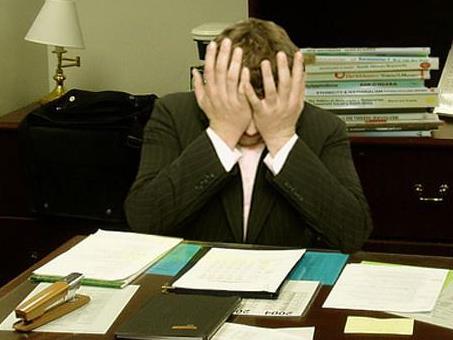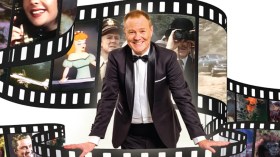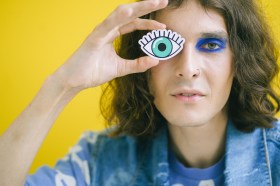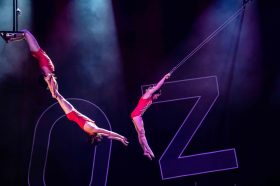‘Sigh,’ thought Jenny, looking out across the rooftops. Another grey Melbourne day passed by the window, another day spent in entry-level arts admin. Jenny knew she should be grateful she had a window at all, let alone a paying job in her chosen field.
Well, sort of ‘chosen field’. Jenny occasionally describes herself as a visual artist – she has masters in it after all – but only at parties when she is feeling plucky. Most days she says she does administration support at one of Melbourne’s largest theatre companies.
Jenny thought enviously of her friend Sandie. Sandie lived in the country, somewhere in Western Australia. Jenny didn’t really know where; she had never been to Sandie’s town or indeed to WA, NT, QLD or SA. Jenny knew more about inner Berlin than anything west of Apollo Bay. But she did know that Sandie’s art career was thriving.
In Melbourne Sandie had been one of the many early career artists struggling to get any kind of break. When she was offered a job in that town in WA she took it, saying she’d take it for a short time, get some money behind and then start her art career again.
But instead the job had given her art career a phenomenal boost. Out of her filter bubble, Sandie became dizzyingly diverse in her friendships: police, nurses, farmers, plumbers and mayors. Her town was filled with people from around the globe. She had conversations that extended and challenged her, conversations about art and culture but also about economics, biology, justice and engineering. She was forced to question her firmest beliefs about society.
Required to reassess, Sandie held her work far more lightly. It deepened, broadened and sparkled. There was space for risk. There was time to experiment. There were opportunities to actually make things happen, rather than waiting to be invited or hoping to be anointed.
Her work had a local audience more engaged and diverse than anything an inner city gallery or performance venue could give her. Involved in accountable, deeper and textured connections with her local peers and community, Sandie forged rich and adventurous creative collaborations. Gone were the days of petty competition and a disinterested public. Sandie had impressive access to decision makers, fellow artists and other people willing to turn up, pitch in and extend themselves.
Her work became bigger, bolder and more expansive. She worked with other artists to make incredible things happen. A contemporary dance performance she was involved in was attended by 93% of the town. Jenny had no idea what percentage of Melbournians attended contemporary dance, but it sure as hell wasn’t 93%.
Jenny knew it wasn’t all roses. 1 in 3 people live in regional Australia, yet most government support for the arts seemed magnetically bound to Melbourne and Sydney. No major art institutions did programs in Sandie’s town. Many of the metropolitan-focused arts organisations and artists that visited had a strange messiah complex, thinking they were bringing arts to a cultural wasteland. They were frequently disgruntled to find successful artists already resident there. When the government arts people came through they asked lots of questions, rarely had good news about funding and then left. As far as Jenny could tell, no one in Sandie’s town was obsessed with Berlin.
Sandie described the barriers as ‘structural’ and largely to do with tired perceptions about regional artists. ‘They think we are all dottery, ignorant and racist’ she told Jenny, ‘but the truth is the city is far more segregated’. Many of the resources required for a cutting edge practice, she said, were available in spades: diversity, complexity, relationships to place, time, space, challenge, change. The challenges were to do with opportunities and accessing moneyed metro networks.
So instead Sandie had to make it work herself. She sourced funding from an astonishing array of regionally-engaged sponsors, philanthropists and (generally non-arts) government programs. She found opportunities to connect with other artists locally and via digital connections. She told Jenny that regionally-based artists were great at doing that, but it was hard to involve metro artists in these networks because they never seemed to be able to work out the time difference or get their technology set up, despite having much better access to teleconferencing facilities and the NBN.
Sandie’s work was stronger, more diverse, more critical, engaging with a wider audience and frankly more interesting than anything Jenny could see around her.
‘Sigh,’ thought Jenny. ‘If only I had the courage to live regionally maybe I could have a cutting-edge arts practice too.’ And then she turned back to her artsy data entry.
Get with the program: Arts and Edges, the Regional Arts Australia Summit in Kalgoorlie 16-19th October WA, will share the experience of desert life through stimulating content, networking, artistic programs and inspiring talks. Find out more at raasummit.com.au. RAA is presenting the inaugural National Visual Arts Showcase at the Presiding Officers’ Exhibition Area in Parliament House in Canberra now until 30 April 2014.





